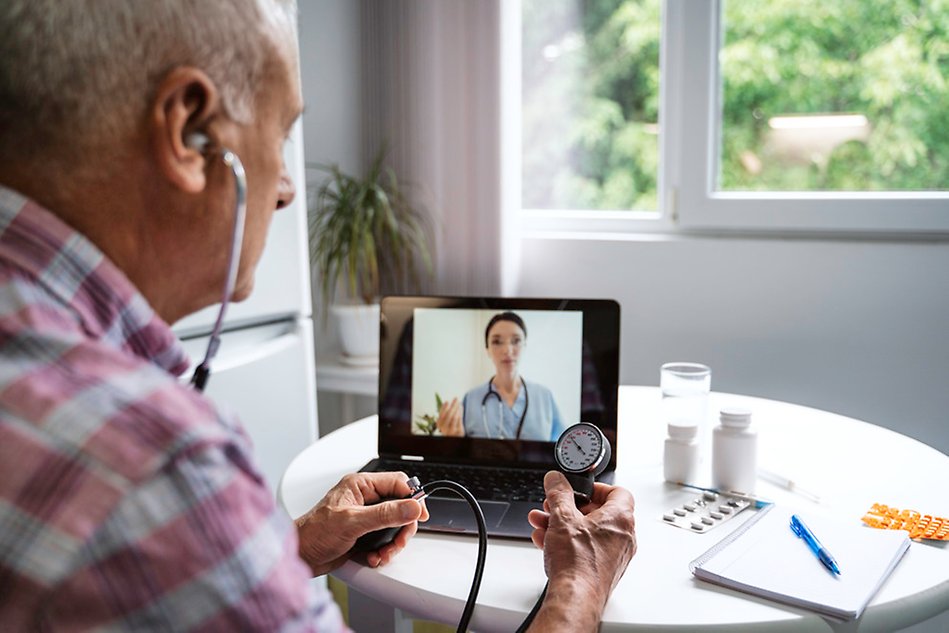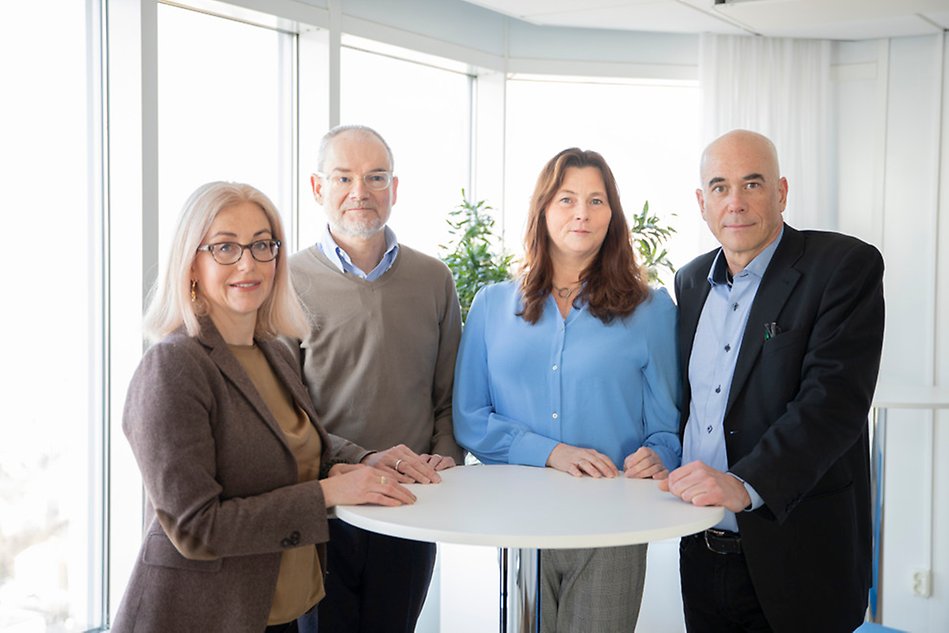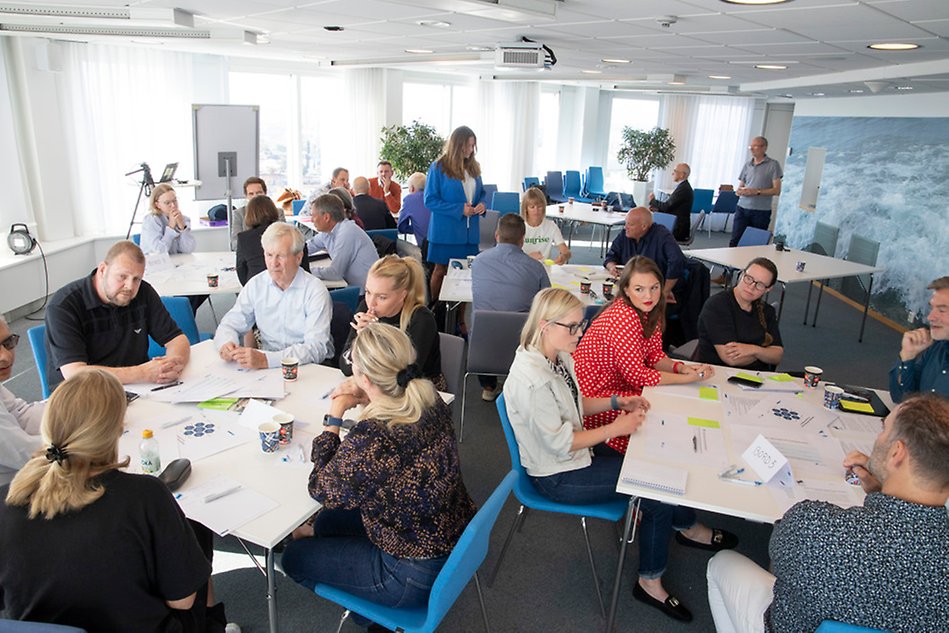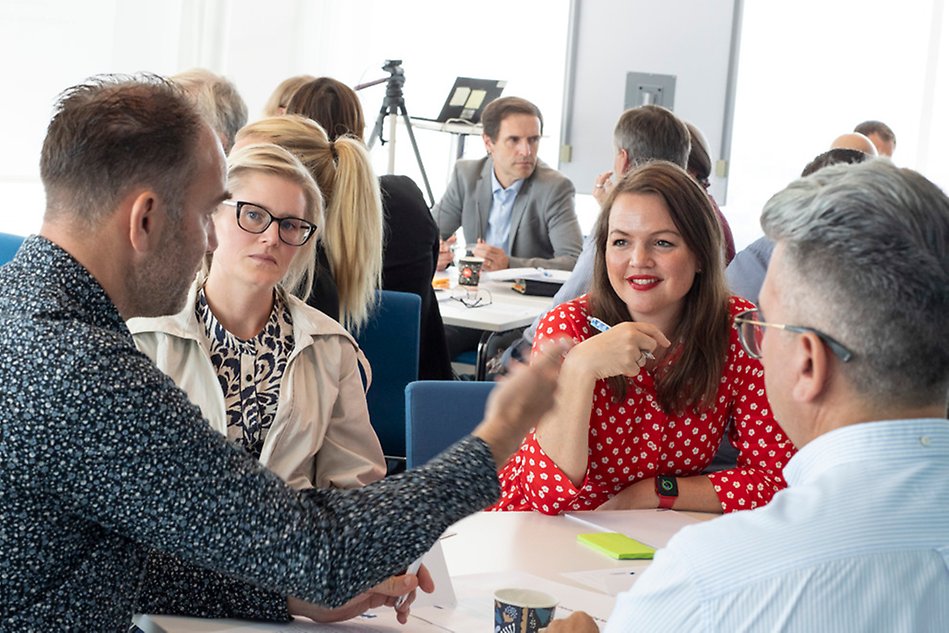Research on commercialisation and implementation promotes “good and close care”
Did you know that it often takes between 10 and 20 years for new innovations to be used in healthcare? Why is that? Through faster and more coordinated commercialisation and implementation processes, researchers at Halmstad University want to contribute to the development of “good and close care” (god och nära vård) with better working conditions for healthcare professionals, higher quality for patients and competitive business models for MedTech companies.

Photo: iStock
“There is a sense of urgency, that this is important and that it needs to happen now.”
Hélène Laurell
The road from the research lab to the actual use of new medical technologies is often long and difficult to navigate.
“Very little is being implemented on a broad scale, and there are many valleys of death along the way. Many inventions, innovative solutions and companies end up in the graveyard. It takes extensive funding and resources to be able to commercialise and implement an innovation, as it can take up to 20 years before the company starts making money from it,” says Senior Lecturer Hélène Laurell, and Professor Jeaneth Johansson adds:
“Companies need to have a long-term plan for financing, often with external financiers such as venture capital firms. However, securing such financing can be challenging due to the long time horizons. It can take many years before financiers recoup their investments.”
The patient as a co-creator in their own care
Self-monitoring or remote patient monitoring (RPM) means that you, as a patient, can manage some parts of your care yourself. With the help of various medical technologies, you can measure your vitals digitally and report them to the healthcare system without visiting healthcare facilities. That way, you become more involved in your own care.
“RPM is an important step towards more patient-centred care, but it is also the type of innovation that is most difficult to implement. For this to succeed, many different actors must change their behaviour and routines, which makes it a complex process,” says Hélène Laurell.
Jeaneth Johansson explains:
“A whole system needs to change, and new business models are needed. Today, the health care system receives payment when the patients visit health care providers, but if the patients manage parts of their care themselves, we will need to find new reimbursement models and working methods.”

Hélène Laurell, James Barlow, Jeaneth Johansson and Patrik Hidefjäll have conducted research on the commercialisation and implementation processes related to medical technologies.
Covid-19 an accelerator for change
For a long time, the development towards increased RPM was rather slow, but during the covid-19 pandemic, the healthcare system was faced with a completely new situation.
“During the pandemic, we saw a rapid development of information-driven and digital care, not least of RPM. Suddenly, it was crucial that as few people as possible visited the healthcare system, which is why the motivation to make the digital solutions work was high. You can also imagine that other things could function as accelerators. There are many reforms underway linked to patient-centred care. Still, one of the most important ones is to ensure that implementation and development become part of the employee’s job description and that we create structures for the uptake and implementation of new innovations,” says Hélène Laurell.
“Here”, says Jeaneth Johansson, “it is important to have internal entrepreneurs – intrapreneurs – who introduce and start using innovations and can act as inspirers and accelerators. For it to work, the intrapreneur needs to have legitimacy within the organisation and be someone others would gladly follow, such as a doctor or a nurse.”
Workshops to understand different perspectives
The majority of all companies that develop medical technologies, solutions and treatment methods, such as RPM solutions, are small a medium-sized. Unlike pharmaceutical companies, which are often large companies with a clearly structured process, medical technology companies have a slightly trickier path to navigate. There is often a lack of clear procedures for new reimbursement models and procurement of new treatment methods and innovations, and it is not always obvious which road the companies should take.
Medical technology companies often find it difficult to gain access to the healthcare sector. There are no obvious ways in, and knowing who to talk to can be hard. You have different logics and do not always understand each other and have a hard time finding platforms where you can meet and talk to each other.
This is where the University’s research project MeTARoad comes in, as a platform for collaboration between four medical technology companies, two investors and the University. In various workshops, key actors from an ecosystem perspective have been able to meet in a neutral place to discuss opportunities and difficulties regarding the commercialisation, uptake and implementation of medical technology innovations. The participants in the workshops have consisted of representatives from different parts of the healthcare sector, growth-promoting organisations, different types of medical technology companies, international representatives and investors.
“The workshops have been very valuable because they have brought actors with different perspectives together who might not have met otherwise. Here, they have been able to sit across from each other and talk about their experiences and needs, which has created a greater understanding and helped to reduce the gap between the different sectors,” says Hélène Laurell.

The MeTARoad research project organises workshops where representatives from healthcare and medical device companies, among others, can convene in a neutral location.
Roadmaps are needed to navigate a complex ecosystem
To navigate the complex landscape in which companies operate and to avoid the valleys of death, they need to evolve their business models and find ways to identify and meet critical challenges.
“Companies need to think about how they should evolve and how they can find their way into the healthcare sector, and at the final workshop it became clearer than ever how important it is to have roadmaps. Depending on the innovation they want to commercialise, they need to make different choices to navigate through the institutional complexity. One way to do this is to develop different collaboration models. Collaboration models are the be-all and end-all of moving forward,” says Hélène Laurell.
It’s not just issues of financing and collaboration models that companies need to consider in their business models. They may also encounter other types of challenges.
“Companies must understand and be able to act on various laws and regulations, procurement processes and change processes, and relate to complex IT structures. It’s also important to remember that none of this exists in a vacuum. The people who will use the innovations are influenced by previous experiences, norms and values and all the knowledge and emotions they carry. Companies also need to deal with this,” says Jeaneth Johansson.
International perspectives are an important part of the project
An important part of the research project has been to make an international comparison. The Swedish healthcare system is complex, with 21 independent regions and 290 municipalities, all independently organising and providing different types of health and social care. In light of this, it can sometimes be easier for medical technology companies to turn directly to an international market.
“Sweden is also a fairly small market. In order to get a return on investment, an international perspective is often required. In other countries, the conditions are different. In the UK, for example, digitalisation in healthcare has been around for quite some time, and there is a different level of maturity. Some of the participating companies have also entered the UK market,” says Jeaneth Johansson.

Participants have described the workshops as both enjoyable and relevant.
Great interest from both the healthcare sector and companies
There has been great interest in the research project, from the healthcare sector, from MedTech companies and from investors.
“There is a sense of urgency, that this is important and that it needs to happen now,” says Hélène Laurell and continues: “All actors have expressed that they found this to be both enjoyable and relevant. There has been a lot of activity at the workshops, and everyone has agreed that it has been useful to meet.”
Now that the project is ending, the research team will take the results and lessons they learned and use them in an application for a follow-up project.
“We want to continue investigating how commercialisation and implementation can be accelerated and what collaboration models are needed to bridge the gap between the different institutional logics. The goal is to develop a toolbox for commercialisation, implementation and scaling that can make it easier for companies, investors and the healthcare sector so that more patients can access 'good and close care',” concludes Hélène Laurell.
Text: Christa Amnell
Photo: iStock and Dan Bergmark
About the MeTARoad project
MeTARoad is part of the research program Information Driven Care (IDC) that takes a broad approach to examining and developing information-driven care solutions, such as scaling and scalability of information-driven care and competitive business models.
Research group
- Hélène Laurell, Senior Lecturer in Business Administration, Halmstad University
- Jeaneth Johansson, Professor of Business Administration, Halmstad University/Luleå University of Technology
- Patrik Hidefjäll, Adjunct Senior Lecturer in Innovation Sciences, Halmstad University
- James Barlow, Professor, Imperial College Business School/Visiting Professor at Halmstad University
Participating companies
- Cross Technology Solutions
- Learning to Sleep
- 1928Diagnostics
- Airsonett
- Dendera Holding
- Wictor Family Office
The research project is funded by the Knowledge Foundation


